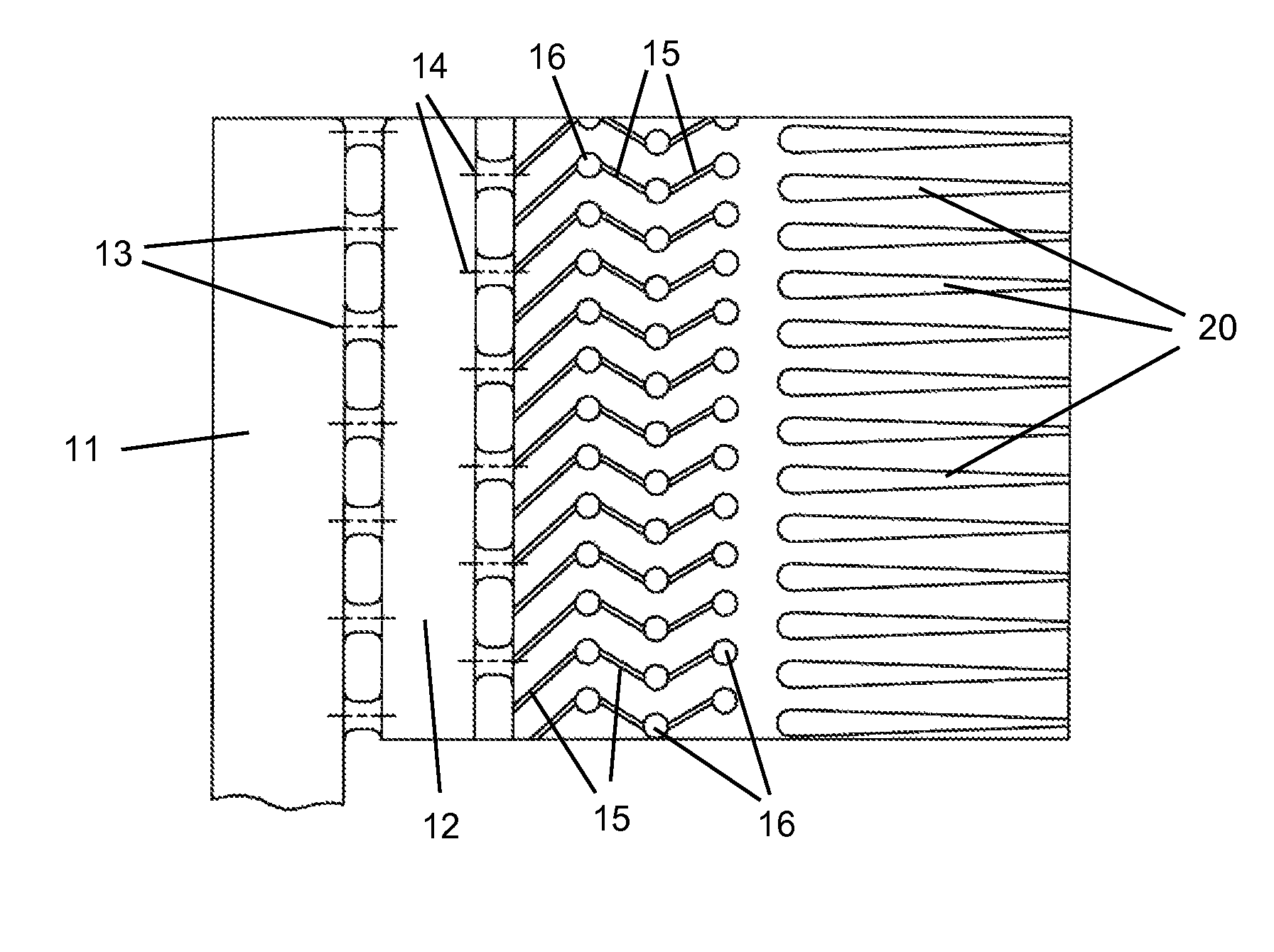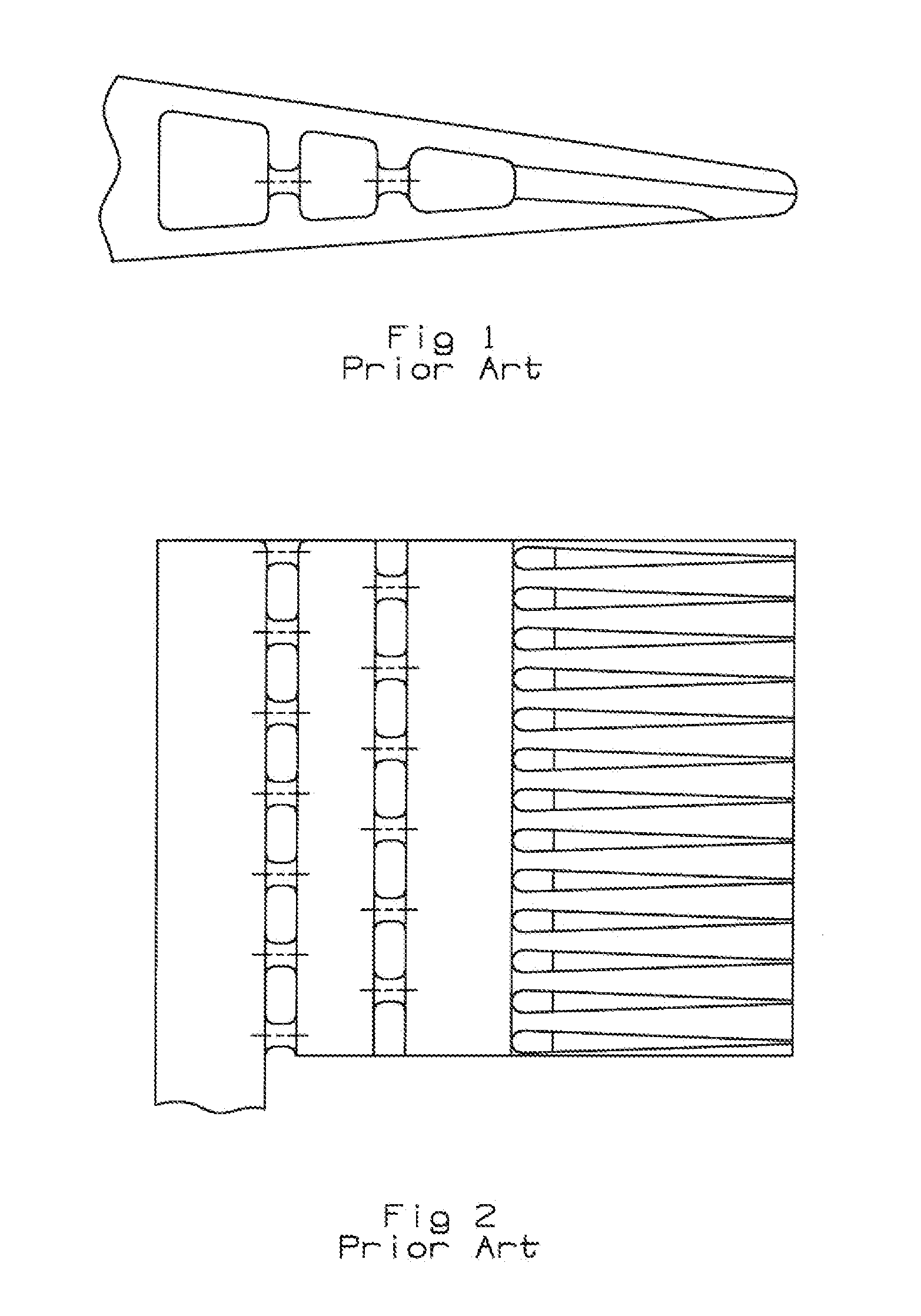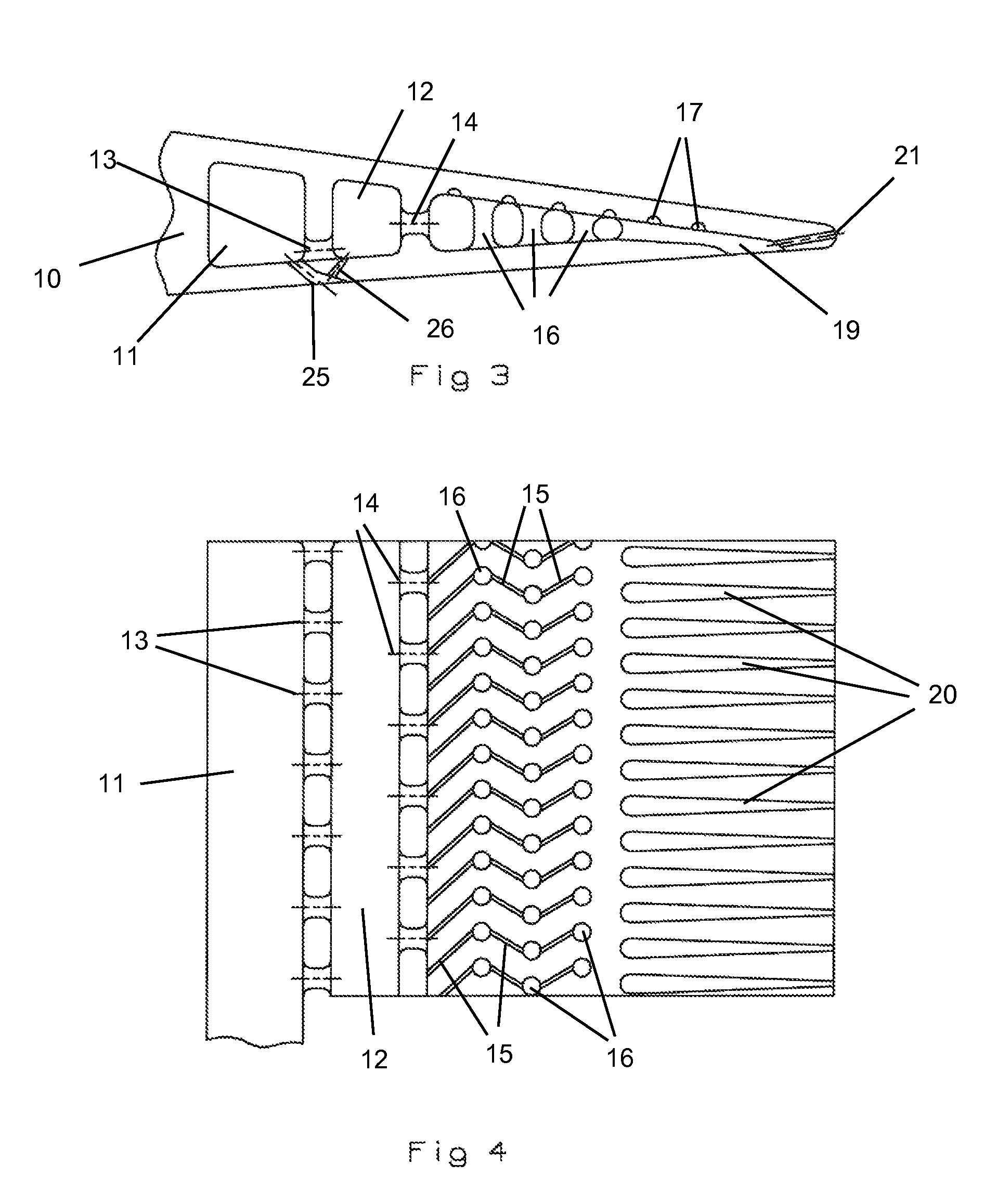Turbine airfoil with micro cooling channels
a technology of airfoils and turbines, which is applied in the direction of blade accessories, machines/engines, mechanical equipment, etc., can solve the problems of high defect rate of airfoils, limited power and performance of gas turbine engines, and high brittle ceramic materials
- Summary
- Abstract
- Description
- Claims
- Application Information
AI Technical Summary
Benefits of technology
Problems solved by technology
Method used
Image
Examples
Embodiment Construction
[0018]The present invention is a turbine airfoil used in a gas turbine engine, where the turbine airfoil includes an internal cooling air circuit and film and exit cooling holes that are produced using the Tomo Lithographic Molding (TLM) process developed by Mikro Systems, Inc. of Charlotte, N.C. that can produce details much smaller than can be produced using the prior art investment casting process. The TLM process builds up the airfoil in layers without using casting or cores to produce molds that include casting. The airfoil is created with the internal passages and other features during the process that creates the entire airfoil.
[0019]FIG. 3 shows a cross section of the trailing edge cooling circuit from a top view that is formed using the TLM process of the present invention. The airfoil 10 includes a first radial channel 11 and a second radial channel 12 located aft and separated by a first row of metering holes 13, where the metering holes are offset from the normal central...
PUM
 Login to View More
Login to View More Abstract
Description
Claims
Application Information
 Login to View More
Login to View More - R&D
- Intellectual Property
- Life Sciences
- Materials
- Tech Scout
- Unparalleled Data Quality
- Higher Quality Content
- 60% Fewer Hallucinations
Browse by: Latest US Patents, China's latest patents, Technical Efficacy Thesaurus, Application Domain, Technology Topic, Popular Technical Reports.
© 2025 PatSnap. All rights reserved.Legal|Privacy policy|Modern Slavery Act Transparency Statement|Sitemap|About US| Contact US: help@patsnap.com



